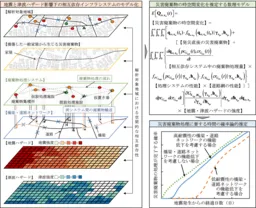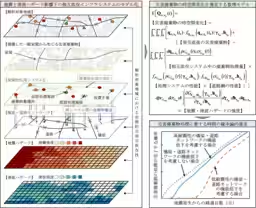

Estimated Disaster Waste Volume from Nankai Trough Earthquake Requires 1.6 Years for Processing
Understanding the Disaster Waste Challenge After the Nankai Trough Earthquake
In light of the anticipated Nankai Trough earthquake, recent research has provided critical insights into disaster waste management, estimating that between 70,000 to 280,000 tons of debris will likely result. Disturbingly, effective processing of this waste would require at least 1.6 years. This extensive research conducted by a collaborative group from Waseda University and various international institutions highlights the essential need for coordinated efforts across multiple infrastructure systems to enhance resilience and expedite recovery.
Insights from the Research
A mathematical model has been developed to gauge the volume of disaster waste and the time needed for its disposal, which considers the damages inflicted on relevant infrastructure systems. Simulations conducted specifically for Mie Prefecture's southern region revealed that large-scale earthquakes, such as those from the Nankai Trough, could lead to significant waste generation with severe implications for recovery efforts. The high volume of waste could severely delay the rehabilitation timeline of affected regions, further exacerbating the challenges faced by disaster relief operations.
The Importance of Preparedness
The study emphasizes the correlation between the speed of waste processing and the overall resilience of a community. Given that the projected volume of disaster waste from the Nankai Trough could amount to around 420 million tons nationally, which is significantly larger than the debris generated by the Great East Japan Earthquake (approximately 21 times greater), it underscores an urgent need for preemptive management strategies to handle such massive waste effectively.
It is essential to prepare for the repercussions of these natural disasters by establishing robust protocols pre-emptively. The significance of preparing for coordinated action among various stakeholders, including waste management authorities and infrastructure operators, cannot be overstated, as their collaboration is vital for minimizing the impact of large-scale calamities.
Embracing Multi-Hazard Models
The research approach integrates multiple hazards, acknowledging the interdependencies between various systems such as waste processing facilities and transportation networks. The methodology extends beyond conventional research by factoring in the risks associated with both seismic and tsunami hazards, offering a comprehensive view of potential outcomes under these combined threats. It anticipates challenges that emphasize the need for holistic strategies in planning disaster management.
Case Studies and Findings
The group, consisting of experts from academic institutions, applied this mathematical model to simulate potential scenarios within the designated areas of Mie Prefecture. Their findings reveal significant insights into the necessary coordination between waste disposal systems and transportation to facilitate timely recovery efforts. For instance, an increased understanding of waste management infrastructure resilience can dramatically influence the speed of recovery operations following a catastrophic event. Sensitivity analyses reveal crucial parameters, such as facility resilience and road network capacity, significantly affect overall processing efficiency. Results demonstrated that improved structural resilience leads to enhanced waste management strategies and quicker recovery timelines.
Societal Impacts and Future Directions
This research strongly emphasizes the impact that effective waste management has on societal recovery post-disaster. Community resilience is intricately linked to the effectiveness of waste processing and quick action post-calamity. By providing robust frameworks for estimating both waste generation and processing timelines, this research contributes practical knowledge that can guide policy development and disaster management practices in the future.
Continuing advancements in the quantification of seismic effects on community resilience and waste processing protocols will be critical in shaping future strategies. Furthermore, adapting these methods to other environmental and disaster contexts may offer additional benefits for urban development and disaster preparedness.
In summary, as we face potential disasters such as the Nankai Trough earthquake, proactive measures for managing disaster waste become paramount, not only for ensuring swift recovery but for enhancing community resilience in the long term. This study urges all stakeholders to collaborate towards a more prepared and resilient society capable of efficiently handling the aftermath of natural disasters.
Conclusion
With the imminent threat posed by the Nankai Trough earthquake, understanding the dynamics of disaster waste management is crucial. Ongoing research will pave the way for innovative solutions that strengthen our infrastructure and improve societal resilience in the face of natural calamities.


Topics Policy & Public Interest)










【About Using Articles】
You can freely use the title and article content by linking to the page where the article is posted.
※ Images cannot be used.
【About Links】
Links are free to use.